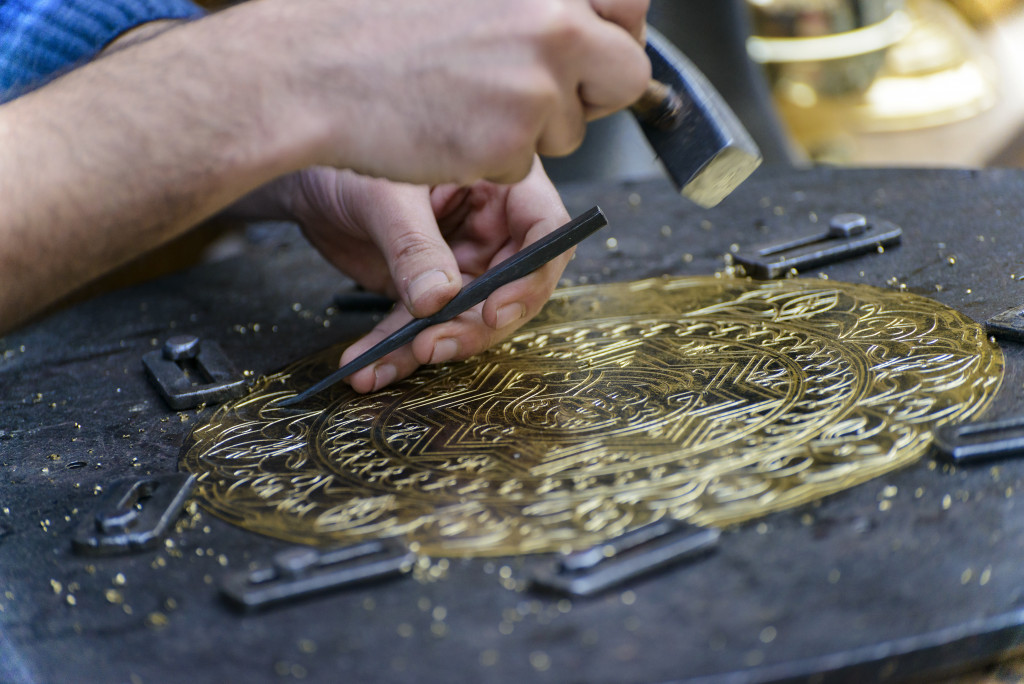Engraving technology has been around for centuries, from hand-carved stone inscriptions to modern-day laser engravers. From making personalized gifts to creating advertising signage, engraving is still a popular way of marking various materials and products.
As centuries have passed, the technology surrounding engraving has continued to evolve. More and more businesses are also turning to engrave to customize their branding and products. This includes everything from laser cutting custom shapes into metal or wood to etching intricate designs onto glassware. Here’s a brief look at the role of technology in the engraving industry today, starting with its history and development.
The History of Engraving Technology
Since ancient times, people have been using engraving technology to create beautiful works of art. Ancient civilizations used simple tools to carve wood and stone. At the same time, modern-day technology has enabled us to etch intricate designs into metal and glass.
The Earliest Engravings
Engraving has been around for centuries. In its simplest form, it is scratching or etching an image, pattern, or text onto a surface. The earliest known examples of engravings date back to Europe’s Upper Paleolithic period (40,000-10,000 BCE).
Archaeologists have found evidence that humans were using primitive tools made from animal bones and flint stones to carve out images on their cave walls and objects, such as bone tools and jewelry.
The Ancient World And Beyond
As civilizations developed, so did engraving technology. In ancient Egypt and Mesopotamia, craftsmen were able to produce more complex carvings by using copper chisels and hand-held drills powered by foot pedals.
The ancient Greeks used iron punches and stamps to etch intricate images onto coins while the Romans produced bronze plaques with raised lettering by hammering down the design from behind a sheet of metal called a matrix. The Chinese also had their own version of engraving; they used an adhesive material called lacquer to coat objects before scratching in designs with a sharp tool called a chisel-tip brush.
The Modern Era of Engraving Technology
Today’s engravings are far more precise than those created using traditional techniques. Advances in technology have allowed for faster production times and more consistent results. Here are the latest developments in the engraving industry.
Laser Engraving

Laser engraving has revolutionized the industry by allowing for precision on a much smaller scale than traditional methods. Laser engravings can create intricate designs that can be applied to various materials such as wood, metal, glass, plastic, and even stone.
By using a laser machine, craftsmen can etch extremely detailed images into materials quickly and cost-effectively. It also makes it easier to create large quantities of identical items quickly and accurately. This versatile technology has allowed businesses to save time and money while producing high-quality results.
3D Printing & CNC Machining
3D printing and CNC machining are two other technologies that are making an impact in the world of engraving. 3D printing allows for complex shapes to be created from various materials, such as plastics, metals, and ceramics.
Meanwhile, CNC machining allows for precise control over shape and size when cutting or forming materials such as wood and metal. Both 3D printing and CNC machining have been used for years in manufacturing applications but are now being used more frequently for engraving purposes as well.
Computer-Controlled Machines
Computer-controlled machines have made it possible for businesses to automate their processes when it comes to creating engraved products or objects. These types of machines allow businesses to quickly produce large numbers of products with accuracy and precision without having to worry about human error or inconsistencies in quality.
Automation also helps reduce costs associated with labor since fewer workers are needed to oversee the production process. Additionally, computer-controlled machines can provide detailed reports on performance metrics so that businesses can make better decisions when it comes to production efficiency or design changes.
The Future of Engraving Technology
It’s an exciting time for the engraving industry as new technologies emerge that offer even greater precision and detail than ever before. 3D printing has become increasingly popular in recent years, allowing users to create customized items with an unprecedented level of complexity that was previously impossible with traditional methods.
As 3D printing continues to become more affordable and accessible, it will open up new opportunities for businesses in the engraving industry who want to stay ahead of the curve when it comes to creating innovative designs for their customers.
Final Thoughts
Engraving technology has come a long way since its inception thousands of years ago—from painstakingly carved stone monuments to ultra-precise laser beams that can etch a design onto almost any material imaginable within minutes! As technological advances continue at an ever-increasing rate, the possibilities are endless regarding what we can create through this age-old art form—whether it’s personalized gifts or large-scale advertising signage—the power is now firmly within our hands! With so many possibilities available through modern technology, there’s never been a better time for businesses in this industry to explore new ways they can use these incredible tools!
